- Home
- Orhan Pamuk
My Name is Red Page 35
My Name is Red Read online
Page 35
As with all of my miniaturists, I once paid an unannounced visit to his home. Unlike my work area and that of many other master miniaturists, his was a filthy confusion of paints, brushes, burnishing shells, his folding worktable and other objects. It was a mystery to me, but he wasn’t even embarrassed by it. He took no outside jobs to earn a few extra silver coins. After I related these facts, Black said it was Olive who showed the most enthusiasm for and the most ease with the styles of the Frankish masters admired by his late Enishte. I understood this to be praise from the deceased fool’s point of view, mistaken though it was. I can’t say whether Olive was more deeply and secretly bound to the Herat styles — which went back to his father’s mentor Siyavush and Siyavush’s mentor Muzaffer, back to the era of Bihzad and the old masters — than he appeared to be, but it always made me wonder whether Olive harbored other hidden tendencies. Of my miniaturists (I told myself spontaneously), he was the most quiet and sensitive, but also the most guilty and traitorous, and by far the most devious. When I thought about the Commander’s torture chambers, he was the first to come to mind. (I both wanted and didn’t want him to be tortured.) He had the eyes of a jinn; he noticed and took account of everything, including my own shortcomings; however, with the reserve of an exile able to accommodate himself to any situation, he’d rarely open his mouth to point out mistakes. He was wily, yes, but not in my opinion a murderer. (I didn’t tell Black this.) Olive didn’t believe in anything. He had no faith in money, but he’d nervously squirrel it away. Contrary to what is commonly believed, all murderers are men of extreme faith rather than unbelievers. Manuscript illumination leads to painting, and painting, in turn, leads to — God forbid — challenging Allah. Everybody knows this. Therefore, to judge by his lack of faith, Olive is a genuine artist. Nevertheless, I believe that his God-given gifts fall short of Butterfly’s, or even Stork’s. I would’ve wanted Olive to be my son. As I said this, I wanted to incur Black’s jealousy, but he only responded by opening his dark eyes and staring with childlike curiosity. Then I said Olive was magnificent when he worked in black ink, when he rendered, for pasting in albums, warriors, hunting scenes, Chinese-inspired landscapes full of storks and cranes, pretty boys gathered beneath a tree reciting verse and playing lutes, and when he depicted the sorrow of legendary lovers, the wrath of a sword-bearing, enraged shah, and a hero’s expression of fear as he dodged the attack of a dragon.
“Perhaps Enishte wanted Olive to do the last picture that would show in great detail, in the style of the Europeans, Our Sultan’s face and manner of sitting,” Black said.
Was he trying to confuse me?
“Supposing this were the case, after Olive killed Enishte, why would he abscond with a picture he was already familiar with?” I said. “Or, if you like, why would he murder Enishte in order to see that picture?”
We both pondered these questions for a while.
“Because there’s something missing in that painting,” said Black. “Or because he regrets something he did and is scared by it. Or even…” he thought for a while. “Or, having killed Enishte, he might’ve taken the painting to do further harm, for the sake of having a memento, or even for no reason at all. Olive is, after all, a great illustrator who’d naturally have a lot of respect for a beautiful painting.”
“We’ve already discussed in what ways Olive is a great illustrator,” I said, growing angry. “But none of Enishte’s illustrations is beautiful.”
“We haven’t yet seen the last painting,” Black said boldly.
The Attributes of Butterfly
He is known as Hasan Chelebi from the Gunpowder Factory district, but to me he’s always been “Butterfly.” This nickname always reminds me of the beauty of his boyhood and youth: He was so handsome that those who saw him didn’t believe their eyes and wanted a second look. I’ve always been astonished by the miracle of his being as talented as he is handsome. He’s a master of color and this is his greatest strength; he painted passionately, reeling with the pleasure of applying color. But I cautioned Black that Butterfly was flighty, aimless and indecisive. Anxious to be just, I added: He’s a genuine miniaturist who paints from the heart. If the arts of ornamentation are not meant to cater to intelligence, to speak to the animal within us, or to bolster the pride of the Sultan; that is, if this art is meant to be only a festival for the eyes, then Butterfly is indeed a true miniaturist. He makes wide, easy, blithe curves, as if he’d taken lessons from the masters of Kazvin forty years ago; he confidently applies his bright, pure colors, and there’s always a gentle circularity hidden in the arrangement of his paintings; but I’m the one who trained him, not those long-dead masters of Kazvin. Maybe it’s for this reason that I love him like a son, nay, more than a son — but I never felt any awe toward him. As with all of my apprentices, in his boyhood and adolescence, I beat him freely with brush handles, rulers and even pieces of wood, but this doesn’t mean I don’t respect him. Though I beat Stork frequently with rulers, I respect him too. In contrast to what the casual onlooker might assume, a master’s beating doesn’t rid the young apprentice of jinns of talent and the Devil, but only suppresses them temporarily. If it happens to be a good beating, and deserved, later on the jinns and the Devil will rise up and stimulate the developing miniaturist’s resolve to work. As for the beatings I administered to Butterfly, they shaped him into a content and obedient artist.
I at once felt the need to praise him to Black: “Butterfly’s artistry,” I said, “is solid proof that the picture of bliss, which the celebrated poet ponders in his masnawi, is only possible through a God-given gift for understanding and applying color. When I realized this, I also realized what Butterfly lacked: He hadn’t known that momentary loss of faith that Jami refers to in his poetry as “the dark night of the soul.” Like an illustrator painting in the great happiness of Heaven, he sets to his work with conviction and contentment, believing that he can make a blissful painting, which he does succeed in doing. Our armies besieging Doppio castle, the Hungarian ambassador kissing the feet of Our Sultan, Our Prophet ascending through the seven heavens, these are of course all inherently happy scenes, but rendered by Butterfly, they become flights of ecstasy springing from the page. In an illustration of mine, if the darkness of death or the seriousness of a government session weighs heavy, I’ll tell Butterfly to “color it as you see fit,” and thereupon, the outfits, leaves, flags and sea that lay there muted as if sprinkled with dirt meant to fill a grave begin to ripple in the breeze. There are times when I think Allah wants the world to be seen the way Butterfly illustrates it, that He wants life to be jubilation. Indeed, this is a realm where colors harmoniously recite magnificent ghazals to each other, where time stops, where the Devil never appears.”
However, even Butterfly knows this isn’t enough. Someone must have quite rightly — yes, in good measure — whispered to him that in his work everything was as joyous as a holiday, but devoid of depth. Child princes and senile old harem women on the verge of death enjoy his paintings, not men of the world forced to struggle with evil. Because Butterfly is well aware of these criticisms, poor man, he at times grows jealous of average miniaturists who though much less talented than he are possessed of demons and jinns. What he mistakenly believes to be devilry and the work of jinns is more often than not straightforward evil and envy.
He aggravates me because when he paints, he doesn’t lose himself in that wondrous world, surrendering to its ecstasy, but only reaches that height when he imagines his work will please others. He aggravates me because he thinks about the money he’ll earn. It’s another of life’s ironies: There are many artists with much less talent yet more able than Butterfly to surrender themselves to their art.
In his need to make up for his shortcomings, Butterfly is preoccupied with proving that he has sacrificed himself to art. Like those birdbrained miniaturists who paint on fingernails and pieces of rice, pictures almost invisible to the naked eye, he’s engrossed with minute and delicate craftsmanship.
I’d once asked him whether he gave himself over to this ambition, which has blinded many illustrators at an early age, because he was ashamed of the excessive talent Allah had granted him. Only inept miniaturists paint each leaf of a tree they’ve drawn on a grain of rice to make an easy name for themselves and to gain importance in the eyes of dense patrons.
Butterfly’s inclination to design and illustrate for other people’s pleasure rather than for his own, his uncontrollable need to please others, made him, more than any of the others, a slave to praise. And so it follows that an uncertain Butterfly wants to ensure his standing by becoming Head Illuminator. It was Black who had raised this subject.
“Yes,” I said, “I know he’s been scheming to succeed me after I die.”
“Do you think this would drive him to murder his miniaturist brethren?”
“It might. He’s a great master, but he’s not aware of this, and he can’t leave the world behind when he paints.”
I said this, whereupon I grasped that in truth I, too, wanted Butterfly to assume leadership of the workshop after me. I couldn’t trust Olive, and in the end Stork would unwittingly become slave to the Venetian style. Butterfly’s need to be admired — I was upset at the thought that he could take a life — would be vital in handling both the workshop and the Sultan. Only Butterfly’s sensitivity and faith in his own palette could resist the Venetian artistry that duped the viewer by trying to depict reality itself rather than its representation, in all its detail: pictures, shadows included, of cardinals, bridges, rowboats, candlesticks, churches and stables, oxen and carriage wheels, as if all of them were of the same importance to Allah.
“Was there ever a time when you visited him unannounced as you had with the others?”
“Whosoever looks upon Butterfly’s work will quickly sense that he understands the value of love as well as the meaning of heartfelt joy and sorrow. But as with all lovers of color, he gets carried away with his emotions and is fickle. Because I was so enamored of his God-given and miraculous talent, of his sensitivity to color, I paid close attention to him in his youth and know everything there is to know about him. Of course, in such situations, the other miniaturists quickly become jealous and the master-disciple relationship becomes strained and damaged. There were many moments of love during which Butterfly did not fear what others might say. Recently, since he married the neighborhood fruit seller’s pretty daughter, I’ve neither felt the desire to go see him, nor have I had the chance.”
“Rumor has it that he’s in league with the followers of the Hoja from Erzurum,” Black said. “They say he stands to gain a lot if the Hoja and his men declare certain works incompatible with religion, and thereby, outlaw our books — which depict battles, weapons, bloody scenes and routine ceremonies, not to mention parades including everyone from chefs to magicians, dervishes to boy dancers, and kebab makers to locksmiths — and confine us to the subjects and forms of the old Persian masters.”
“Even if we returned skillfully and victoriously to those wondrous paintings of Tamerlane’s time, even if we returned to that life and vocation in all its minutia — as bright Stork would best be able to do after me — in the final analysis, all of it’ll be forgotten,” I said mercilessly, “because everybody will want to paint like the Europeans.”
Did I actually believe these words of damnation?
“My Enishte believed the same,” Black confessed meekly, “yet it filled him with hope.”
The Attributes of Stork
I’ve seen him sign his name as the Sinning Painter Mustafa Chelebi. Without paying any mind to whether he had or ought to have a style, whether it should be identified with a signature or, like the old masters, remain anonymous, or whether or not a humble bearing required one to do so, he’d just sign his name with a smile and a victorious flourish.
He continued bravely down the path I’d set him on and committed to paper what none before him had been able to. Like myself, he too would watch master glassblowers turning their rods and blowing glass melted in ovens to make blue pitchers and green bottles; he saw the leather, needles and wooden molds of the shoemakers who bent with rapt attention over the shoes and boots they made; a horse swing tracing a graceful arc during a holiday festival; a press squeezing oil from seeds; the firing of our cannon at the enemy; and the screws and the barrels of our guns. He saw these things and painted them without objecting that the old masters of Tamerlane’s time, or the legendary illustrators of Tabriz and Kazvin, hadn’t lowered themselves to do so. He was the first Muslim miniaturist to go to war and return safe and sound, in preparation for the Book of Victories that he would later illustrate. He was the first to eagerly study enemy fortresses, cannon, armies, horses with bleeding wounds, injured soldiers struggling for their lives and corpses — all with the intent to paint.
I recognize his work from his subject matter more than his style and from his attention to obscure details more than his subject matter. I could entrust him with complete peace of mind to execute all aspects of a painting, from the arrangement of pages and their composition to the coloring of the most trivial details. In this regard, he has the right to succeed me as Head Illuminator. But he’s so ambitious and conceited, and so condescending toward the other illustrators that he could never manage so many men, and would end up losing them all. Actually, if it were left to him, with his incredible industriousness, he’d simply make all the illustrations in the workshop himself. If he put his mind to such a task, he could in fact succeed. He’s a great master. He knows his craft. He admires himself. How nice for him.
When I visited him unannounced once, I caught him at work. Resting upon folding worktables, desks and cushions were all the pages he was working on: illustrations for Our Sultan’s books, for me, for miserable costume books that he dashed off for foolish European travelers eager to belittle us, one page of a triptych he was making for a pasha who thought highly of himself, images to be pasted in albums, pages made for his own pleasure and even a vulgar rendition of coitus. Tall, thin Stork was flitting from one illustration to the next like a bee among flowers, singing folk songs, tweaking the cheek of his apprentice who was mixing paint and adding a comic twist to the painting he was working on before showing it to me with a smug chuckle. Unlike my other miniaturists, he didn’t stop working in a ceremonial show of respect when I arrived; on the contrary, he happily exhibited the swift exercise of his God-given talent and the skill he’d acquired through hard work (he could do the work of seven or eight miniaturists at the same time). Now, I catch myself secretly thinking that if the vile murderer is one of my three master miniaturists, I hope to God it’s Stork. During his apprenticeship, the sight of him at my door on Friday mornings didn’t excite me the way Butterfly did on his day.
Since he paid equal attention to every odd detail, with no basis of discrimination except that it be visible, his aesthetic approach resembled that of the Venetian masters. But unlike them, my ambitious Stork neither saw nor depicted people’s faces as individual or distinct. I assume, since he either openly or secretly belittled everyone, that he didn’t consider faces important. I’m certain deceased Enishte didn’t appoint him to draw Our Sultan’s face.
Even when depicting a subject of the utmost importance, he couldn’t keep from situating a skeptical dog somewhere at some distance from the event, or drawing a disgraceful beggar whose misery demeaned the wealth and extravagance of a ceremony. He had enough self-confidence to mock whatever illustration he made, its subject and himself.
“Elegant Effendi’s murder resembles the way Joseph’s brothers tossed him into a well out of jealousy,” said Black. “And my Enishte’s death resembles the unforeseen murder of Hüsrev at the hands of his son who had his heart set on Hüsrev’s wife, Shirin. Everyone says that Stork loved to paint scenes of war and gruesome depictions of death.”

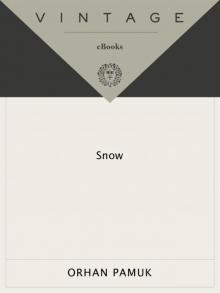 Snow
Snow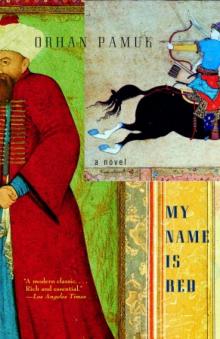 My Name is Red
My Name is Red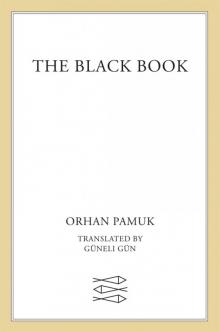 The Black Book
The Black Book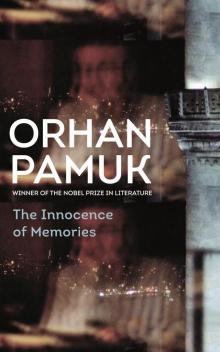 The Innocence of Memories
The Innocence of Memories The White Castle
The White Castle Other Colors
Other Colors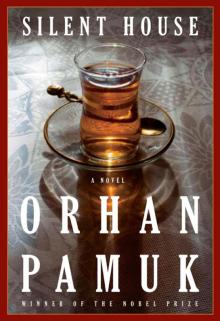 Silent House
Silent House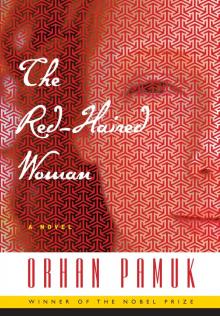 The Red-Haired Woman
The Red-Haired Woman The Museum of Innocence
The Museum of Innocence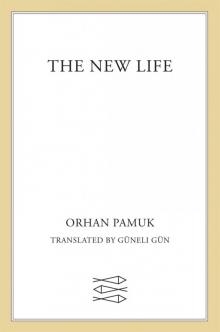 The New Life
The New Life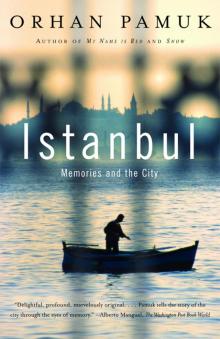 Istanbul
Istanbul